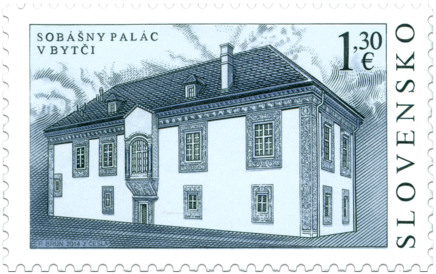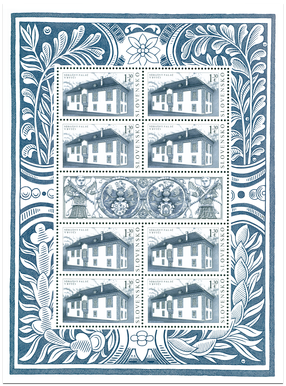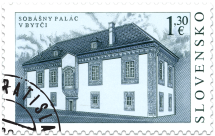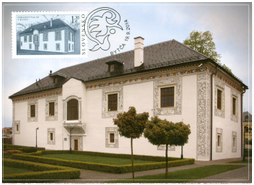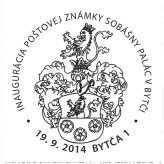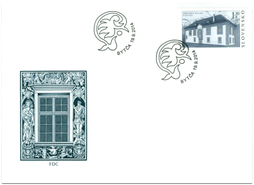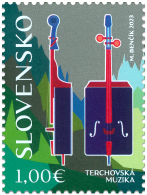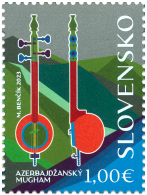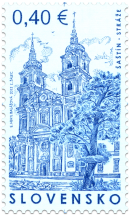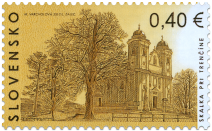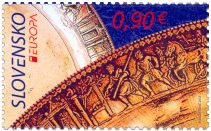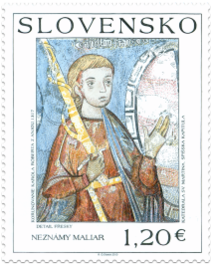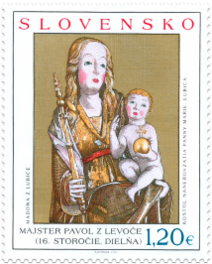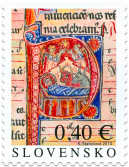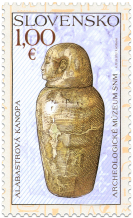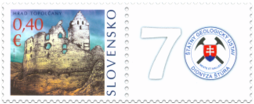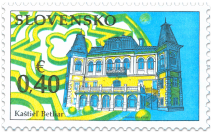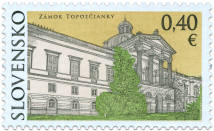569 Date of issue
19.09.2014 Face value
1.30 € Sell price
1.30 €
The Wedding Palace in Bytča is generally viewed as one of the most significant late Renaissance buildings in the Kingdom of Hungary. It draws one’s attention through its specific function and crucial position in the political and educational life of the client.
Standing detachedly within the castle premises, the palace is called “palota” (events hall) in historical sources. The term usually does not represent a particular type of a building. It denominates rather a pompous room of large dimensions. Having a rectangle shape, an impressive great hall located on the first floor of the one-storey building is exceptional from the perspective of local profane buildings.
Circumstances of its construction and its purpose itself are recorded in the authentic inscription above the main entrance: “Palatine George Thurzo, pincenarum regalium and adviser of His Imperial Highness, built this palace of paternal love for the wedding feast of his beloved daughters, if God let them live so long, in A.D. 1601.”
George Thurzo was married twice. While two daughters of his were born in the first marriage with Sofia Forgách, he had nine children, of which five daughters and one son reached adultness, during the loving marriage with Elizabeth Czobor. Thanks to parental care, they made their bonds of marriage in the Wedding Palace in Bytča. Susanna Thurzo married Stephen of Perin (1603) and Judite married Andrew Jakusith (1607). The spectacular wedding of the George Thurzo’s brother-in-law, Michael Czobor, who married Susanna (1610) after she became a widow, was also held there. However, taking a week and participated by 2,600 guests, the wedding of the most favourite daughter, Barbara, with Kristóf Erdödi (1612) represented the most splendid event ever. The marriages of Helene and Gaspar Illésházy (1614), Mary and Michael Vizkelety (1618), Imrich and Christina Nyáry, Catherine and Stephen Tököly (1620), and Ann and John Suňog (1621) were solemnised in the Wedding Palace, as well.
The purpose of seeming detachment of the Wedding Palace events hall from the Bytča Castle premises was to give a new meaning to the building itself. Although, its creator proclaimed it to be a place of entertainment, in fact, it became a scene of a social and political life.
George Thurzo might have got inspired by Prague Belvedere or arcade villas in Vienna or Innsbruck. Nonetheless, he also might have had a meeting place of aristocracy in Logett, Venice on his mind. Since George Thurzo travelled to Venice in 1597 and recorded his experience of sea view and enormous wealth of the city and its monuments in his diary. Without a doubt, impressions he gained affected his representation requirements, including a need to construct as well as the layout of the Wedding Palace.
Zuzana Ludiková
© 2024 POFIS - Postal philatelic service. All rights reserved

